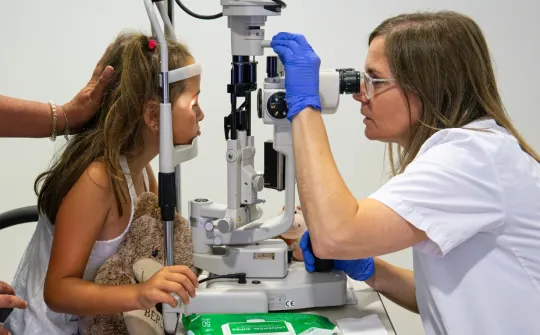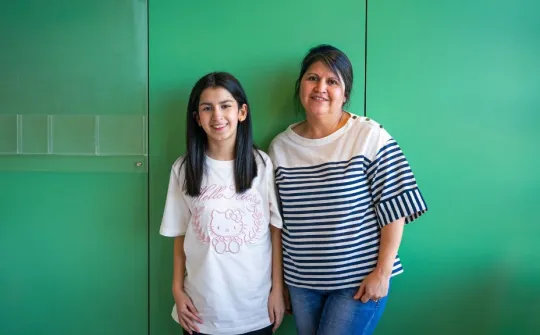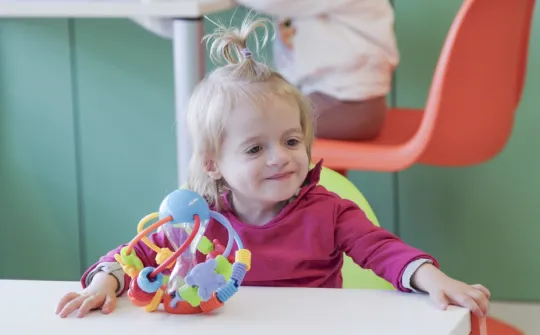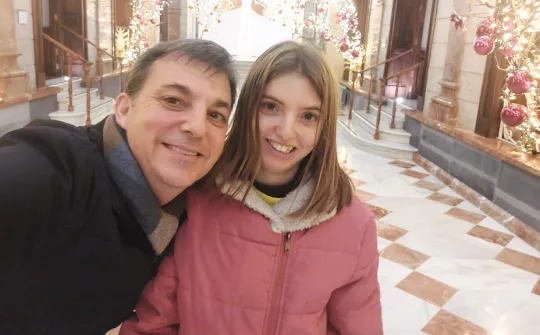‘Since neurotising the cornea, we’ve gone from weekly visits to the emergency room to going just twice a year’
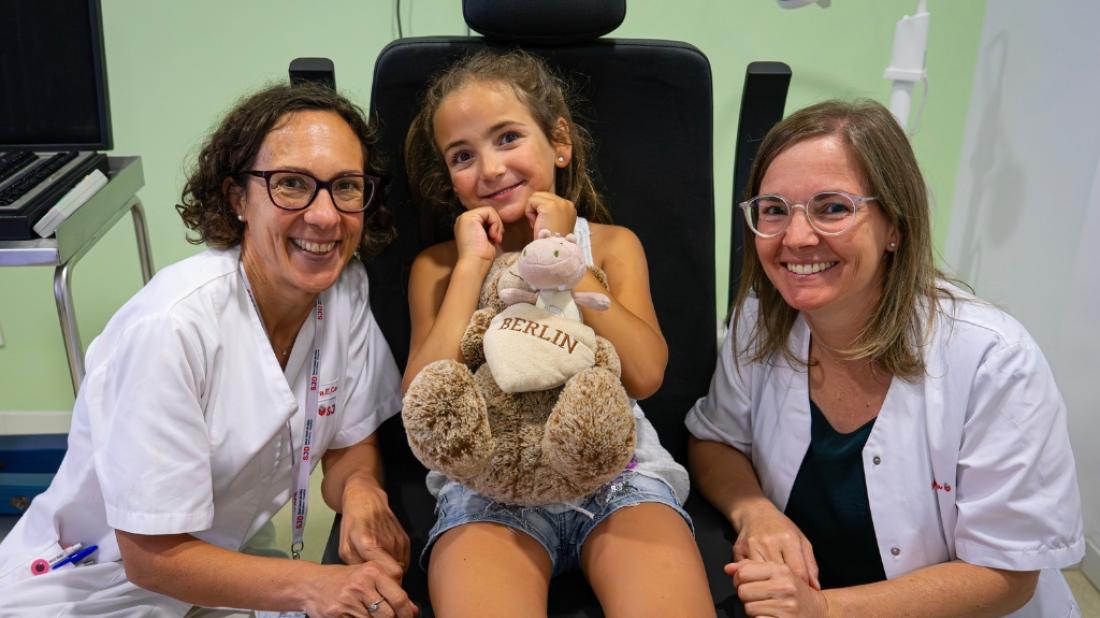
The mother of a girl who was going blind tells us how her child regained corneal sensation and vision after a nerve graft taken from her leg.
Roser knew that something was wrong with her daughter just hours after she was born. ‘Elsa didn't have a rooting reflex. I brought her to my breast but she wouldn't latch on. When I brought it up with the pediatrician, they attributed it to her low blood sugar at birth and to having had to give her lots of glucose.’
But the glucose spike normalised and the child still did not latch on. That was the first warning sign. The second was when Elsa was just 18 months old and her brother sprayed her in the face with an air freshener. ‘It burned her cornea, but she didn't cry,’ recalls the mother. ‘When we took her to hospital and they gave her some eyedrops that normally sting quite a lot, she also didn't seem bothered. The attending ophthalmologist told us that this wasn't normal, and that there must be something wrong. She was then referred to an ophthalmologist specialising in the cornea.’
At the same time, Roser had also discussed the incident with the girl's neuropediatrician, who ordered an MRI scan. They then agreed with the ophthalmologist to refer Elsa to the SJD Barcelona Children's Hospital. ‘They didn't see anything abnormal. Because of the air freshener incident, we knew that Elsa had little to no sensation in either of her corneas, but we didn’t know why,’ she recalls. Corneal sensation is a key aspect of eye health, as it activates the blink reflex to protect against foreign bodies and to help lubricate the eye.
As she had no sensation, Elsa frequently suffered from eye lesions, which gradually reduced her vision. ‘She had lost more than 90% of her sight. When she was younger, she would bump into things and, when she would fall, she would prefer to land on her face than try to save herself with her hands because she felt the pain in her hands but not in her mouth. At three years old, she lost quite a few teeth because of it,’ remembers Roser. To help prevent the eye lesions, the girl would wear swimming goggles when outside to protect her eyes from the winter winds, and she would avoid the beach in summer because, according to the mother: ‘we had to watch her carefully to make sure no sand got in her eyes because either she took off the goggles or they fell off by mistake.’
The cause: a severe malformation of the trigeminal nerve
A second MRI scan three years later in 2022 shed some light on Elsa’s case. This scan revealed that the girl had hypoplastic, or poorly developed, trigeminal nerves, which are involved in corneal sensation and chewing. ‘Then it all started coming together. All of the problems she’d had were from the same cause. The doctors had already mentioned doing a neurotisation, but after seeing the results of the MRI, they ruled it out,’ explains Roser. Ophthalmologist Ester Casas notes that ‘in a classic neurotisation procedure, a graft is spliced with the supraorbital or supratrochlear nerve and the cornea to assume the role of the defective nerve. In Elsa’s case, the problem was that all three of these nerves are branches of the trigeminal nerve, which was severely malformed. That meant that this technique was of no benefit to her.’
But the mother did not give up. She contacted ophthalmologists from the Basque Country and in Barcelona in search of yet another opinion. That is how she ended up getting in touch with an ophthalmologist from Hospital Clinic—a facility associated with the SJD Barcelona Children's Hospital—in August 2023. ‘When I told them about Elsa’s case, they said they’d heard it being discussed before and they already knew about it from when we first went to the SJD Barcelona Children’s Hospital. They also knew that we still didn't know what was wrong with Elsa.
We were lucky enough that, shortly after our appointment with that specialist, the national ophthalmology conference took place, where they presented an innovative new technique that was used in a case involving a young girl from the United States,’ recalls the mother. ‘Instead of grafting onto the supraorbital nerve,’ says Dr Casas, ‘this technique uses the great auricular nerve (located behind the ear). In both cases, a segment of the sural nerve was used—a sensory nerve in the leg—to connect the origin nerve, meaning the supraorbital or great auricular nerve, with the cornea.’
The staff at the SJD Barcelona Children's Hospital who were handling Elsa’s case got in touch with the professionals who had carried out this procedure so that, together, they could create a plan for Elsa. On 18 January 2024, the girl went into theatre. She was the first pediatric patient in Spain to undergo this procedure. ‘Doctors said that, if there were going to be any results, it would take a few months for them to appear. It must have been around four months after the operation when she was putting in eyedrops and she felt a cold sensation. A year later, she could feel pain,’ recalls Roser.
The girl still has to wear protective glasses, scleral contact lenses and frequently uses eyedrops, but the most important aspect, according to the mother, is that ‘she has far fewer eye lesions and we’ve gone from weekly visits to the emergency room due to eye ulcers to going just twice a year. She's recovered 10% of her sight in the operated eye and she can go about her life practically like normal. With the scleral lenses made by her optometrist, she has reached 60-70% vision.’ Because of the success of this operation on just the one eye so far, soon her other eye will be operated on, too.
